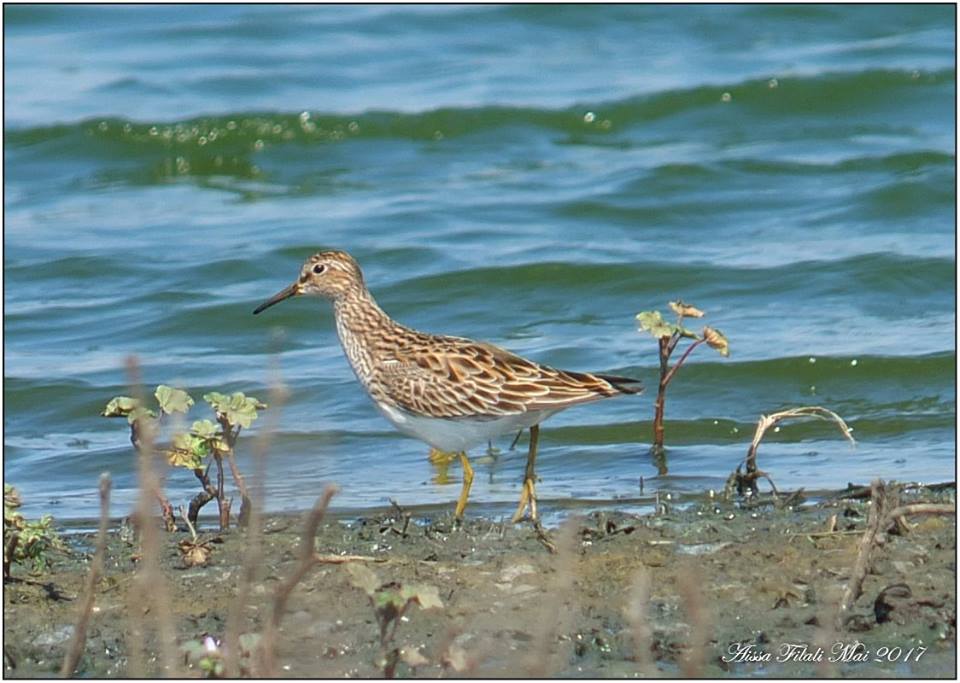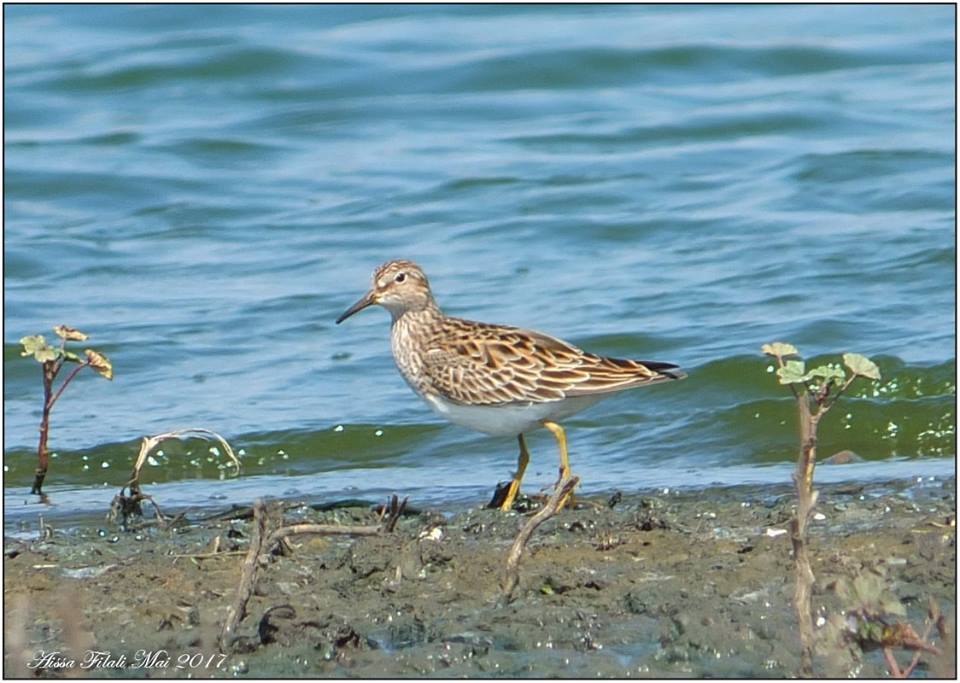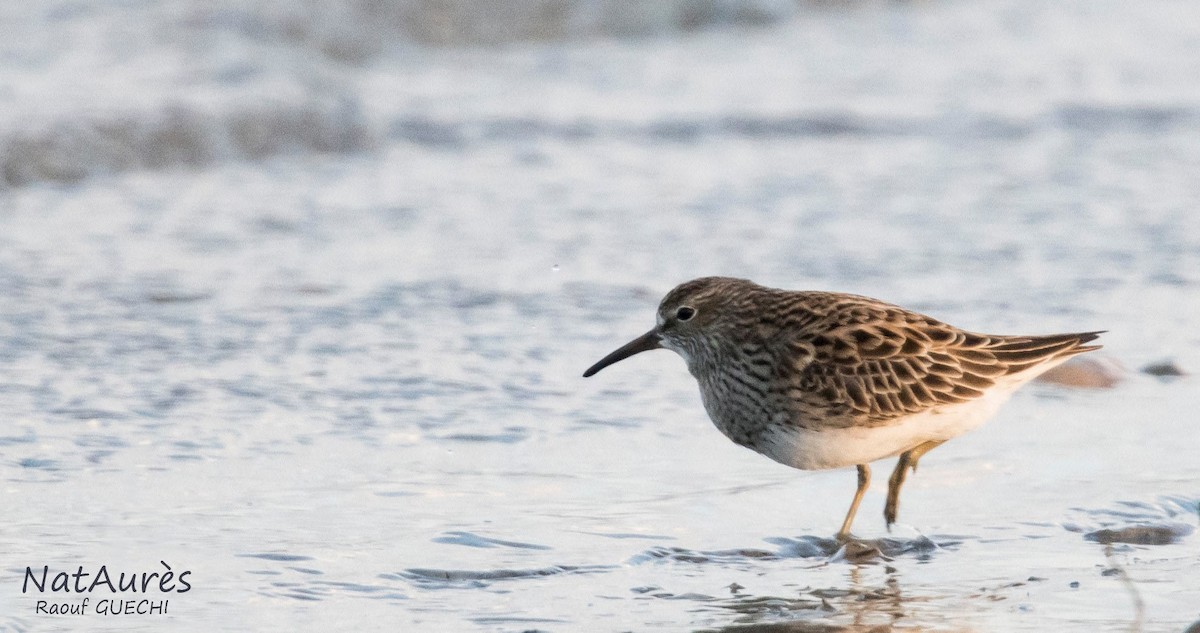The Pectoral Sandpiper (Calidris melanotos) breeds in northern North America (Canada and Alaska) and northern Siberia, and winters in southern South America, southeastern Australia, Tasmania and New Zealand. It’s one of the most observed Nearctic species in Western Europe and also in parts of the west coast of Africa. For example, the species was removed from the list of rarities in Spain in 2016. (Most of the birds observed in this part of the world are most likely originated from America rather than from Siberia).
In Northwest Africa, the species is more encountered in Morocco where there are at least 16 records, all but one were observed in autumn (Note that some records involved two birds). All Moroccan observations have been on the Atlantic coast between the marshes of Lower Loukkos and Oued Noun. There are annual observations in Morocco since 2010.
Until the end of 2016, there were no known records either in Algeria or in Tunisia.
The first Algerian records came in spring
On 1 May 2017, Aissa Djamel Filali photographed a Pectoral Sandpiper in Constantine, northeast Algeria. Raouf Guechi reported also having photographed a bird on the same day at Barrage Timgad, Batna (photo 3). Timgad is located about 100 km south of Lake el-Aria. So the question is, do these two observations concern two different birds? or just the same bird that moved between the two sites? (Verified: they are two different birds). These observations are the first known and documented records of the species in Algeria.
It’s interesting to note that this bird was observed in spring when the species is normally much rarer. For example, the first record in Morocco dates back to autumn 1963 and the first spring observation was recorded only in May 2013 (it was the 13th record overall).
References:
Isenmann, P. & Moali, A. 2000. Oiseaux d’Algérie / Birds of Algeria. SEOF, Paris.
Isenmann, P., Gaultier, T., El Hili, A., Azafzaf, H., Dlensi, H. & Smart, M. 2005. Oiseaux de Tunisie / Birds of Tunisia. SEOF, Paris.
Thévenot, M., Vernon, R. & Bergier, P. 2003. The Birds of Morocco. BOU Checklist No. 20. BOU, Tring.
+ Reports of the Moroccan Rare Birds Committee (MRBC).
Premières observations du Bécasseau tacheté en Algérie
Le Bécasseau tacheté se reproduit au nord de l’Amérique du Nord (Canada et Alaska) et au nord de la Sibérie, et hiverne dans la partie sud de l’Amérique du Sud, sud-est de l’Australie, la Tasmanie et la Nouvelle Zélande. C’est l’une des espèces nord-américaines les plus observées dans l’Europe occidental et aussi dans certaines parties de la côte atlantique de l’Afrique. Par exemple, l’espèce a été retirée de la liste des raretés en Espagne en 2016. (La plupart des oiseaux observés dans cette partie du monde sont très probablement originaires d’Amérique plutôt que de Sibérie).
En Afrique du Nord-Ouest, l’espèce est plus rencontrée au Maroc où il y a au moins 16 mentions, toutes sauf une ont été en automne (Notez que certaines mentions impliquaient deux oiseaux). Toutes les observations marocaines ont été sur la côte atlantique entre les marais du Bas Loukkos et Oued Noun. Il y a des observations annuelles au Maroc depuis 2010.
Jusqu’à la fin de 2016, il n’y avait aucune mention connue ni en Algérie ni en Tunisie.
Les premières mentions algériennes sont arrivées au printemps
Le 1 mai 2017, Aissa Djamel Filali a photographié un Bécasseau tacheté au Lac el-Aria à Constantine, nord-est d’Algérie. Raouf Guechi rapport aussi avoir photographié un individu le même jour à Barrage Timgad, Batna (photo 3). Timgad est situé environ 100 Km au sud du Lac el-Aria. La question donc, est ce que ces deux observations concernent deux oiseaux différents? ou juste le même oiseau qui s’est déplacé entre les deux sites? (Vérifié: ce sont deux oiseaux différents). Ces observations constituent les premières mentions connues et documentées de l’espèce en Algérie.
Il est intéressant de noter que cet oiseau est observé au printemps lorsque l’espèce est généralement beaucoup plus rare. Par exemple, la première mention au Maroc remonte à l’automne 1963 et la première observation du printemps n’a été documentée qu’en mai 2013 (c’était la 13ème mention marocaine).
Bravo aux observateurs !


